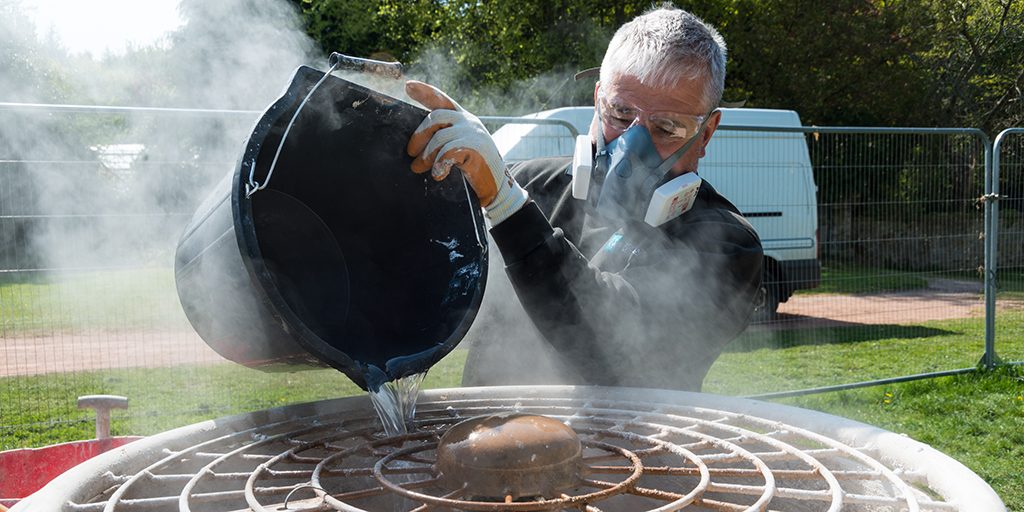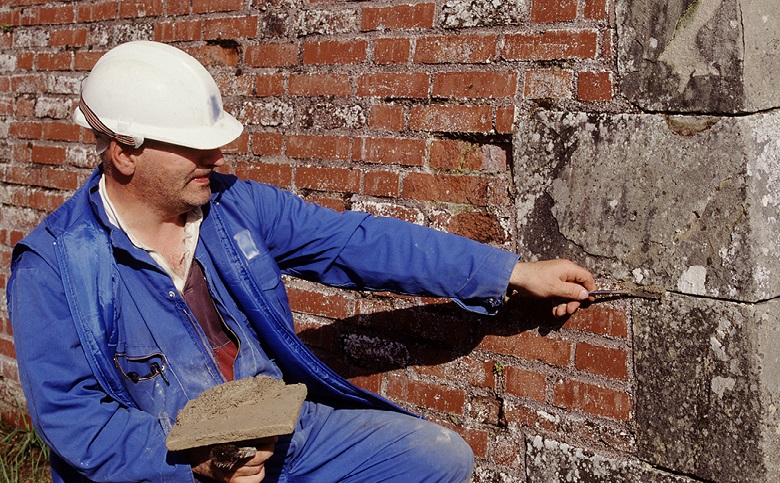Hot mixed lime mortars are a hot topic in building conservation. Wider awareness of the impacts of climate change has led to a focus on adapting traditional buildings for the future. Using the right type of mortar is crucial to ensuring that repairs are both appropriate and durable.

Making a hot mixed mortar.
Hot mixed mortars: pros and cons
Recently there’s been a lot of interest in using traditional quicklime to prepare mortars, which has led to discussion and debate among those involved in looking after traditional buildings.
For masonry repairs to traditional buildings, we usually use lime mortar, made up from quicklime, sand and sometimes other additives. Over the last 25 years, lime has generally been considered to be the best material for repairing traditional buildings, and modern supplies of lime have developed for this use.
Hot mixed mortars are made using quicklime (calcium oxide). They’re called “hot” mixed mortars because when the calcium oxide reacts with water during the making of the mortar, it produces a lot of heat. To “use what they used” in repairs is good building conservation practice, and there is evidence that hot mixed mortars are very durable. Some historic mortars are still holding strong over a century after the buildings they’re part of have been abandoned.
However, a lot of people aren’t convinced of how well these mortars last in Scotland’s climate, or that there are the available skills in the modern construction industry to use hot mixed mortars safely and effectively. Badly-made mortars and a lack of training in how to use them properly has played a part in this.

Repointing using lime mortar.
Things to consider when working with hot mixed mortars:
• There’s a lot of historic evidence that quicklime-based mortars were used in Scotland (and elsewhere).
• That, when they’ve been properly applied, hot mixed mortars tend to have survived well.
• That considering a building’s architectural details and how it manages water is important to the success of hot mix mortar repairs. Using a hot mixed mortar may not always be appropriate for certain repairs.
For more information on hot mixed lime mortars take a look at our free case studies and technical papers.





